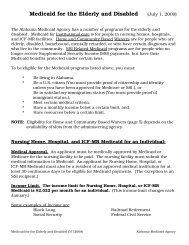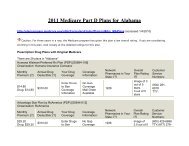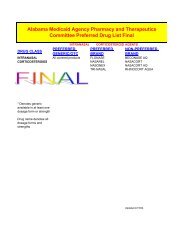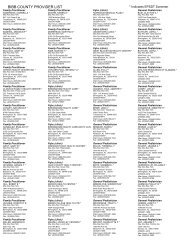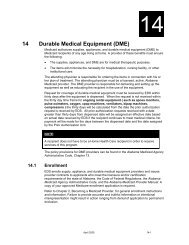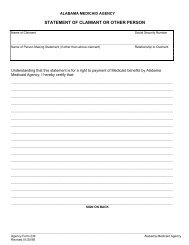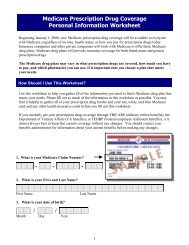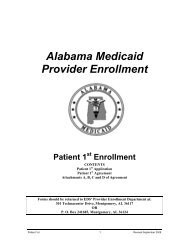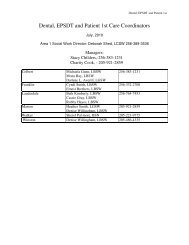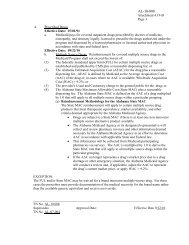PHARMACOTHERAPY REVIEW CNS STIMULANTS for treatment of ...
PHARMACOTHERAPY REVIEW CNS STIMULANTS for treatment of ...
PHARMACOTHERAPY REVIEW CNS STIMULANTS for treatment of ...
You also want an ePaper? Increase the reach of your titles
YUMPU automatically turns print PDFs into web optimized ePapers that Google loves.
Product Group Onset <strong>of</strong> Action (min) Duration <strong>of</strong> Action (hrs)Rapid Onset/Short Duration 20 – 30 3 – 6Slower Onset/Longer Duration 30 – 60 4 – 8Rapid Onset/Longer Duration 20 – 30 8 – 12The choice <strong>of</strong> <strong>CNS</strong> stimulant product to treat ADHD is also determined by the drugstolerability relative to adverse effects. Adverse effects to the <strong>CNS</strong> stimulants are similar infrequency, severity and duration. 26 The most common adverse effects to the stimulants aredecreased appetite, stomachache, weight loss, insomnia, mood disturbances, headache,jitteriness, irritability, dry mouth, elevated blood pressure and dizziness. Transient motor orvocal tics may occur but usually subside over time or when the dosage is reduced. At oraldoses utilized to treat ADHD, euphoria and psychological dependence is rare. Most sideeffects can be managed by lowering the dosage, but this could compromise quality <strong>of</strong> care.Most side effects are mild and will recede over time without significant dosage adjustment asthe body regulates itself through various homeostatic processes.G. Alternative ADHD TherapiesAlthough SSRI antidepressants have not been shown to be effective ADHD therapies, thetricyclic agents, imipramine and desipramine, and bupropion are considered second-linetherapies <strong>for</strong> treating ADHD in patients unresponsive to stimulants.Clonidine and guanfacine are less effective than stimulants in treating ADHD. Mostclinicians are reluctant to use these products <strong>of</strong>f-label to treat ADHD because <strong>of</strong> their adverseeffects.Atomoxetine is a nonstimulant drug indicated <strong>for</strong> ADHD. It is not a controlled substance andis indicated <strong>for</strong> use in adults as well as children. Atomoxetine is a selective norepinephrinereuptake inhibitor. The immediate, dramatic effect that stimulants produce has not been seenin children with ADHD treated with atomoxetine. Long-term safety and efficacy has not yetbeen adequately documented in well-controlled comparative trials. 27H. Controversies in Treating ADHDStimulant drug effectiveness in managing ADHD and improving the ability to focus, learnand work is well established, but controversy is associated with their use. The stimulantdrugs are all in DEA Schedule II (high abuse and diversion potential) except <strong>for</strong> pemoline,which is in Schedule IV. There is, however, little evidence to suggest that stimulant abuse ordiversion is a major problem among those being treated <strong>for</strong> ADHD. 26Issues <strong>of</strong> overdiagnosis <strong>of</strong> ADHD and inappropriate prescribing <strong>of</strong> psychostimulants persist.Most researchers are <strong>of</strong> the opinion that increased use <strong>of</strong> stimulants reflects better diagnosisand more effective <strong>treatment</strong> <strong>of</strong> ADHD from childhood into adulthood.Whether <strong>CNS</strong> stimulants consumed chronically in children alters growth has been debated.Some studies suggest that stimulants may slow weight gain and growth slightly andtemporarily, but long-term effects are either minimal or do not affect final adult height. 29-305




